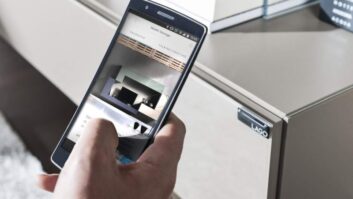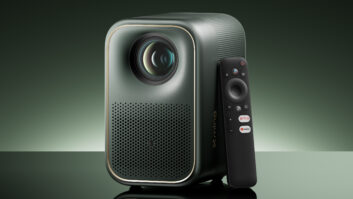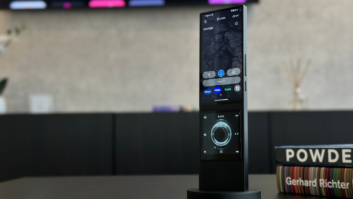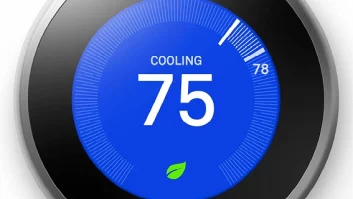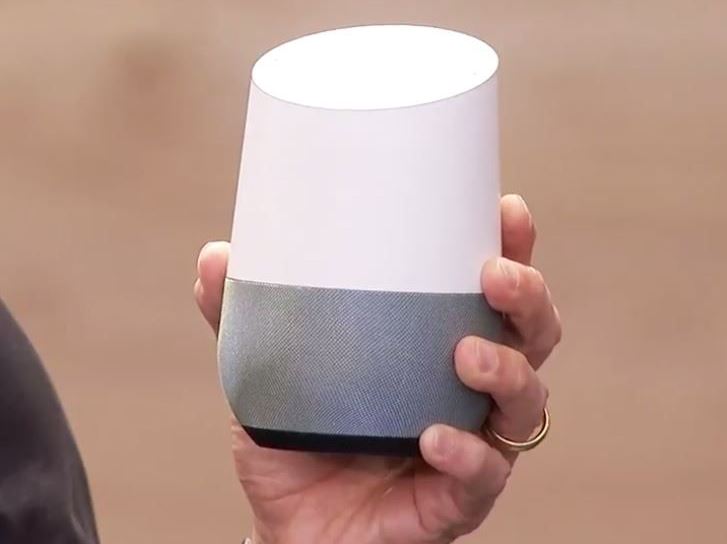
Virtual reality and Android Wear wearables starred at Google’s annual developers conference, where the company also unveiled its Google Home voice-controlled wireless speaker and virtual digital assistant.
Google’s answer to Amazon’s Echo uses Wi-Fi to stream music from the cloud and from GoogleCast-enabled apps on mobile devices, offers wireless multiroom audio unavailable yet in the Echo, and controls smart-home devices, including but not limited to products from Google’s Nest group. It also delivers voice control of Google’s Chromecast dongle for TVs.
Google Home will also respond to natural-language voice queries, scouring the web for basic information such as weather but also answering “difficult questions” that product management VP Mario Queiroz said challenge other personal assistants, such as “How much fat is in an avocado?”
Consumers can also use their voice to set alarms and timers as well as manage to-do lists, and in the future, Google Home will let users order products through the Internet, including flowers and pizza.
The device, which plugs into an electrical outlet for power, brings Google Assistant voice technology with natural-language processing to the home from mobile devices, Queiroz said, and it offers far-field voice recognition to recognize voice commands spoken from across the room.
Google Home is due sometime later this year at an unannounced price, giving app developers time to integrate their apps with Google Home, Queiroz said.
Here’s what else Google announced during keynote speeches at an outdoor amphitheater in Mountain View, Calif., to kick off the three-day Google I/O event:

Android Wear 2.0 will let users display information from multiple apps simultaneously in little windows appearing on a virtual watch face.
Android Wear: The smart watch operating system will get a 2.0 upgrade available in the fall, said engineering VP David Singleton. One of the biggest changes will enable apps to connect to the Internet via a watch’s built-in Wi-Fi or cellular radio without being connected to a nearby smartphone. As a result, consumers will be able to make a voice call from their watch or stream music from the cloud without carrying their phone.
Users will also be able to display information from multiple apps simultaneously in little windows appearing on a virtual watch face. In other improvements, people will be able to respond to messages by hand writing replies on the display or by selecting one of several responses that will be displayed.
Android Wear, which works with Android and Apple phones, was unveiled two years ago and is available from 12 brands in more than 100 designs, Singleton said
Virtual reality: Google will enhance its VR experience with the fall rollout of its Daydream VR platform. The platform includes the VR-optimized Android N smartphone OS due in the summer, a reference headset design for headsets that use Android phones as displays, a reference design for a hand-held remote with clickable touchpad, and performance requirements for Daydream-optimized phones.
Several Daydream-optimized phones will be available in the fall, said VR VP Clay Bavor. Handset vendors planning to offer such phones include Samsung, LG, Alcatel, Huawei, HTC, Xiaomi, and ZTE.
Daydream-compatible apps will include Hulu, Netflix, HBO, Imax, and MLB.com as well as Google Play Movies, Google Street View, and a YouTube rebuilt for VR. VR games will also be available from such companies as Electronic Arts and Ubisoft.

Google CEO Sundar Pinchai opened the Google I/O keynotes
Android N: The latest version of the company’s smartphone OS, due in the summer, will get a name change based on ideas suggested by the public.
The developer version was released earlier this year.
The OS will deliver graphics and run time improvements, increased security, and automatic updates, which will occur automatically and in the background without users having to do anything.




